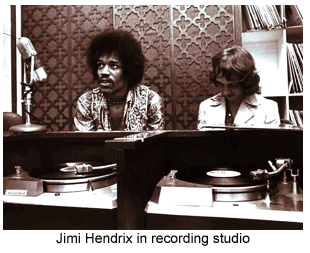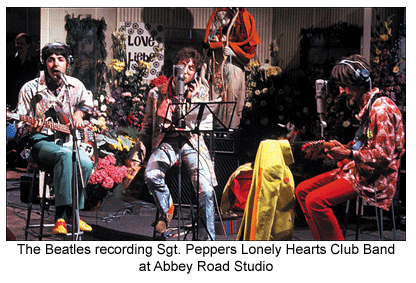- Prelude
- Hard Talk
- New Media
- Rolex : An Overview
- The age of Revivals: Neoclassical Furniture
- Democratization of the Medium No-Budget film: the Indian Context (!)
- Old Sound New Sound
- Decan Odyssey
- North East Opsis
- Russian cool breeze in hot Paris
- Around Kolkata
- Musings from Chennai
- In and around Santiniketan
- In between – from Vadodra
- A Tryst with Art in Madhya Pradesh
- Through the Looking Glass
- The Foreign Connection
- Market Insight
- Market Report
- Artist Index and Statistics
- Auction Reports
- The month that was
- Delhi Dias
- Art Bengaluru
- Mumbai Art Sighting
- Creative Impulse
- Subodh Gupta
- Pooja Iranna
- Preview
- In the News
ART news & views
Old Sound New Sound
Volume: 2 Issue No: 9 Month: 10 Year: 2010

For two years after releasing XnY Colday had been touring. In October 2006 they began work on their fourth album, Viva la Vida or Death and All His Friends, which got released in the middle of 2008 and on 15 June of that year topped the UK album chart. Speaking about this record the band's drummer Will Champion said in an interview for MTV: "One of the main things we tried to focus on with this record is changing vocal identities, because Chris has a very recognizable voice." Chris Martin himself said the album featured less falsetto as he allowed his voice's lower register to take precedence.  He went on to describe Viva la Vida as a new direction for Coldplay: a change from their past three albums, which they have referred to as a "trilogy".
He went on to describe Viva la Vida as a new direction for Coldplay: a change from their past three albums, which they have referred to as a "trilogy".
Later Coldplay revealed that the album was shaping up with Hispanic influences after having recorded in churches and in Spanish-speaking countries such as in Mexico in America and Spain in Europe, such as Barcelona. This happened in 2007 when took a break from their recording and went on a Latin American tour. However, it was stressed that the influence was not in any specific sound but a general feel to the songs taken as a whole. On their website, the band also described taking acoustic guitars and basic recording equipment to churches and experimenting with particular sounds.
What we find quite clearly is band after their third album trying to come with a sound that is different from what they themselves established on their previous cuts. Now this need for a new sound is not as one would put a rare phenomenon. Bands over the ages have dealt with this. The Beatles, if I may the take the liberty and call them the masters, have dealt with it quite remarkably. We see a distinct change coming in Revolver from Rubber Soul and it getting completely over hauled, redone, revamped, take your pick in Sgt. Peppers Lonely Hearts Club Band. The sound changed. Pink Floyd from their Syd Barrett days to the release of the album 'Dark Side of the Moon' which led to the much acclaimed 'The Wall'. We find these changes in every act, every musician which we hold great. But the question arises how do you change the sound? Even a more basic question how to define a sound? For instance how differentiate from a sound associated with one band from b sound associated with another band. For instance if we look carefully we can find a logical progression from the 1930's to the emergence of 'rock' music in the 1960's speaking strictly in theoretical terms. We see how chord progressions used mainly 12-bar blues slowly getting transformed into rock n roll with basically a faster tempo. You listen to Chuck Berry and you will listen to a good old 12-bar blues getting played with a very fast tempo and a matching back beat.
But there is something more to this changing of music than just that. Let us focus on this period of 1950's - 1960's a little more carefully and we will find a parallel change happening in technology. We have these new electronic equipments taking over the music scene. With almost immediate effect they changed the way music sounded or as one would put it a new sound arrived.  But in these cases it is not as I have argued before a band or an artist consciously changing their sound. As George Harrison, taking about modern equipment, much later put it the sound of the tube amps after they were heated adequately is the sound that can never be reproduced again.
But in these cases it is not as I have argued before a band or an artist consciously changing their sound. As George Harrison, taking about modern equipment, much later put it the sound of the tube amps after they were heated adequately is the sound that can never be reproduced again.
The digital world slowly dawned upon and before we knew it had crept from behind and grasped us at length. Everything became digitized so did the music equipment. We now have digital processors emulating the sound of anything you have ever known or heard. So the recording capabilities of the present era in terms of mixing and mastering also became digitized. Today we have computer softwares like Pro Tools, to name one of many, which aid us in recording. We have at our disposal, again to name of many, something called a Auto-Tune which is basically a pitch correcting device. Auto-Tune is a proprietary audio processor created by Antares Audio Technologies. Auto-Tune uses a phase vocoder to correct pitch in vocal and instrumental performances. It is used to disguise off-key inaccuracies and mistakes, and has allowed singers to perform perfectly tuned vocal tracks without the need of singing in tune. While its main purpose is to slightly bend sung pitches to the nearest true semitone (to the exact pitch of the nearest tone in traditional equal temperament), Auto-Tune can be used as an effect to distort the human voice when pitch is raised/lowered significantly.
According to the Boston Herald, "Country stars Faith Hill and Tim McGraw have both confessed to using Auto-Tune in performance, claiming it is a safety net that guarantees a good performance. Sara Evans, John Michael Montgomery and Gary LeVox of the group Rascal Flatts also rely on Auto-Tune to compensate for pitch problems. However, other country music singers, such as Loretta Lynn, Allison Moorer, Trisha Yearwood, Vince Gill, Garth Brooks, Martina McBride, and Patty Loveless, have refused to use Auto-Tune.
It is not important who uses these or who opposes these. But what is important is how the sound of music which we listen to everyday has changed into something else completely.  So what we have thanks to our digital enhancements music which is packaged and delivered like any other commodity. The finer nuances of the artist and the raw feel get lost in the process from recording to the finally mastered production.
So what we have thanks to our digital enhancements music which is packaged and delivered like any other commodity. The finer nuances of the artist and the raw feel get lost in the process from recording to the finally mastered production.
What we find in Coldplay is quite the opposite. We find one artist trying to change their sound by experimenting with the way instruments sound in real life situations and trying to record or capture that sound. The same acoustic guitar would sound one way in a hall and in a completely different way in a room. We find a great example in Led Zeppelin. If we take the last song of their fourth album When The Levee Breaks it is quite interesting how the drums were recorded. John Bonham's drums were recorded in a stairwell at Headley Grange with the microphones planted 3 stories up. The drum sound echoed skyward and was captured on the microphones, creating a very innovative and distinctive sound. How can one talk about sound, as Resnig Halliday put it in the sound chapter of his physics book, without talking about the one and only Jimi Hendrix. He famously changed, reversed to be exact, the coils of the pick-ups of his Fender guitar which created the Purple Haze sound and the rest as they say is history.
Not putting the digital down we can most obviously refer to David Gilmore who used amps and special effects pedals with his favourite VOX wah to create a signature guitar tone which we revel in every time we hear Time, Comfortably Numb, Shine On You Crazy Diamond and list goes on.
So what are we left with man vs technology. It is undoubtedly true that technology has brought with it many benefits but over used will it leave us with a new sound, a more refined sound, a sound of music which can never be incorrect theoretically, a sound which is perhaps not natural, a sound which is not created with natural creativity and innovativeness?